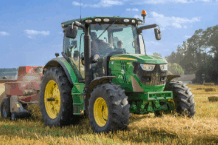Follow cooking directions and sanitation practices to keep everyone healthy
MANHATTAN, Kan. — When working in the kitchen, sometimes the temptation is to snack on the ingredients while we are cooking. Who can resist eating a bite of delicious dough when mixing up a batch of cookies?
But what does that mean when it comes to eating frozen foods like a kernel of corn as it hits the cooking pan?
“It is important to read the package directions to make sure the food is cooked to the proper endpoint temperature,” said Sandy Procter, a K-State Research and Extension nutrition specialist. “Frozen corn was packaged with the intention that it is to be cooked to be completely safe. We may not always read it, but the label says cook before serving or something similar.”
Oftentimes the microwave is the choice for families working with frozen foods. Procter reminded consumers of the importance of proper sanitation following defrosting and cooking in the microwave.
“If the last thing the microwave was used for was to defrost raw meat, there may be some juices dried on the surface that make it unsanitary,” she said. “So, a good practice is to use a disinfecting wipe to clean out the microwave after each use to prevent bacteria growth.”
Good hand washing and regular sanitizing of food preparation surfaces are also important practices to follow, Procter said.
“The food that comes to us frozen is safe, but as soon as we move it from the freezer the food is at risk for contamination if we don’t handle it properly,” she said.
Another food safety reminder is knowing the temperature danger zone for food before it puts consumers at risk for food poisoning.
“We say food is in the temperature danger zone when it is between 40 to 140 degrees Fahrenheit for more than two hours,” Procter said. If food is outside on a 90 degree or warmer day, Procter that time span shortens to one hour.
Another risk in food preparation is not bringing food to the proper internal endpoint temperature, said Procter, so she advised reading the directions on the package for guidance.
“Checking the label and reading the instructions even on familiar products is important because manufacturers don’t have to tell us when they make changes to how the food should be prepared,” she said. “We have the safest food supply in the world, but it is important that we know how to handle that food safely, as well.”
To learn more on this topic, Procter recommended checking out K-State’s Rapid Response Center or their local extension office.
She also encouraged families seek information at the foodsafety.gov website regularly for potential food recalls. Another resource for families is the USDA Meat and Poultry Hotline, 1-888-674-6854 or chat live at ask.usda.gov from 10 a.m. to 6 p.m, Eastern Time, Monday through Friday.
-30-
K State Research and Extension is a short name for the Kansas State University Agricultural Experiment Station and Cooperative Extension Service, a program designed to generate and distribute useful knowledge for the well being of Kansans. Supported by county, state, federal and private funds, the program has county extension offices, experiment fields, area extension offices and regional research centers statewide. Its headquarters is on the K State campus in Manhattan. For more information, visit www.ksre.ksu.edu. K-State Research and Extension is an equal opportunity provider and employer.
Story by:
Lisa Moser
785-532-2010
lmoser@ksu.edu
More information:
Sandy Procter
785-341-1258
procter@ksu.edu




